August 31, 2023
Baldwin American Art Piano
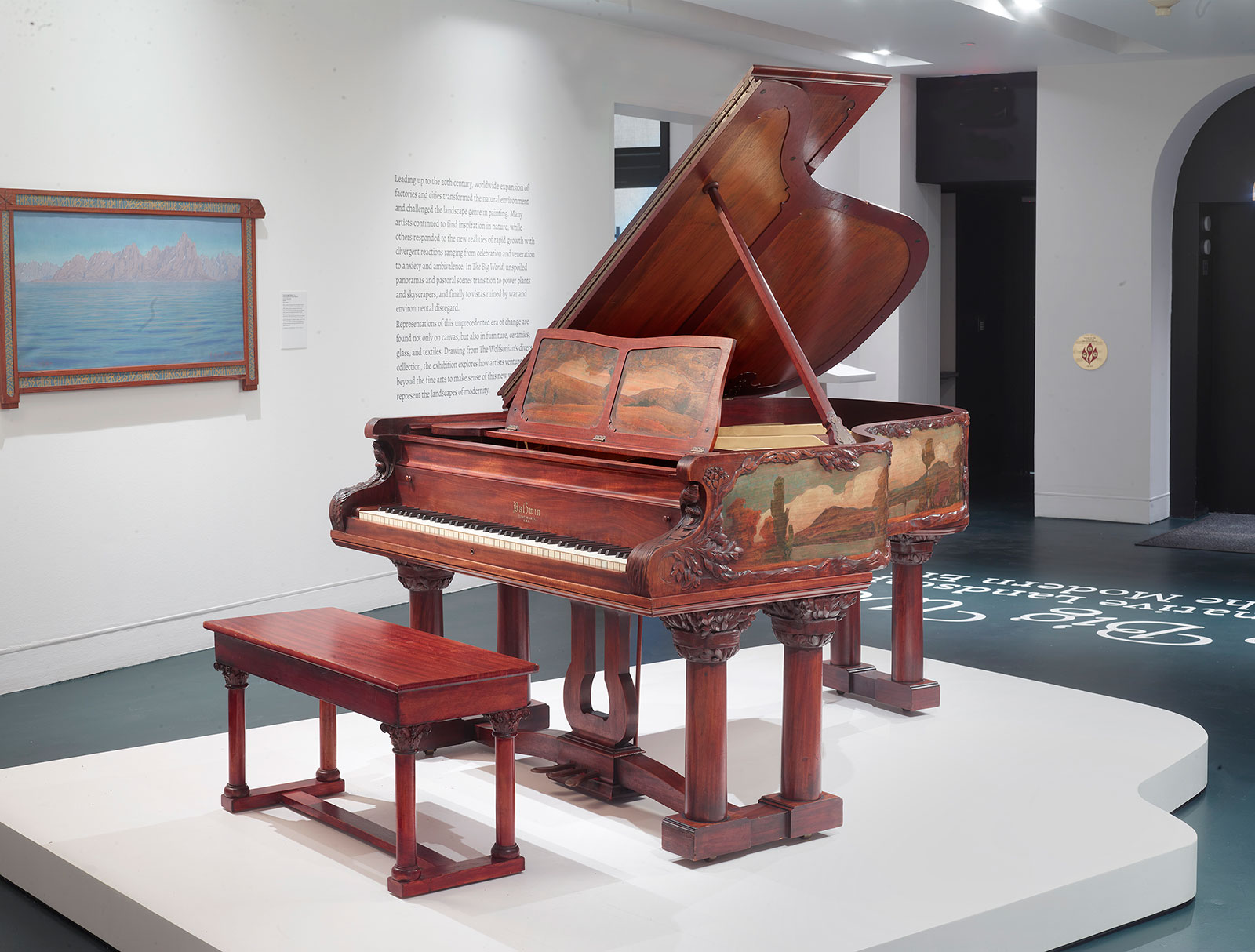
Piano, American Art Piano, 1904
For the 1904 St. Louis Louisiana Purchase Exposition
Joseph Henry Gest (American, 1859–1935), painter
Clement J. Barnhorn (American, 1857–1935), sculptor
Baldwin Piano Company, Cincinnati, Ohio, manufacturer
Mahogany, paint, metal, ivory
The Wolfsonian–FIU, The Mitchell Wolfson, Jr. Collection, 87.600.11.2.1a,b
Just as in the Baldwin Piano display at the 1904 St. Louis Louisiana Purchase Exposition, a spectacular landscape-themed grand piano will greet the visitor entering The Wolfsonian's upcoming exhibition, The Big World: Alternative Landscapes in the Modern Era. At the St. Louis World's Fair, this one-of-a-kind American Art Piano was situated at the entrance of an elaborate temple-like structure designed to showcase five of Baldwin's most exclusive pianos. Text over the columns framing the entrance announced Baldwin's triumph at the 1900 Paris Exposition Universelle—it was the first American piano company to win a Grand Prix. Likewise in St. Louis, Baldwin took home the Grand Prize with this piano.
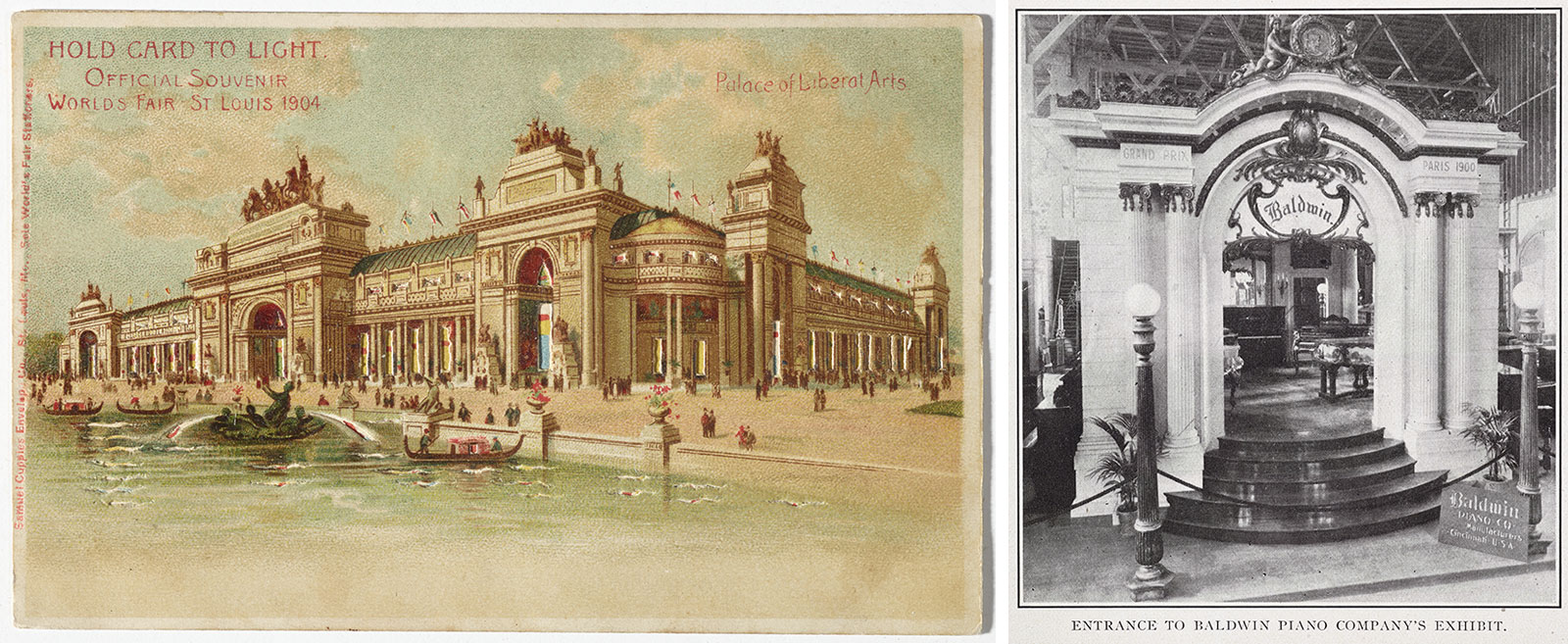
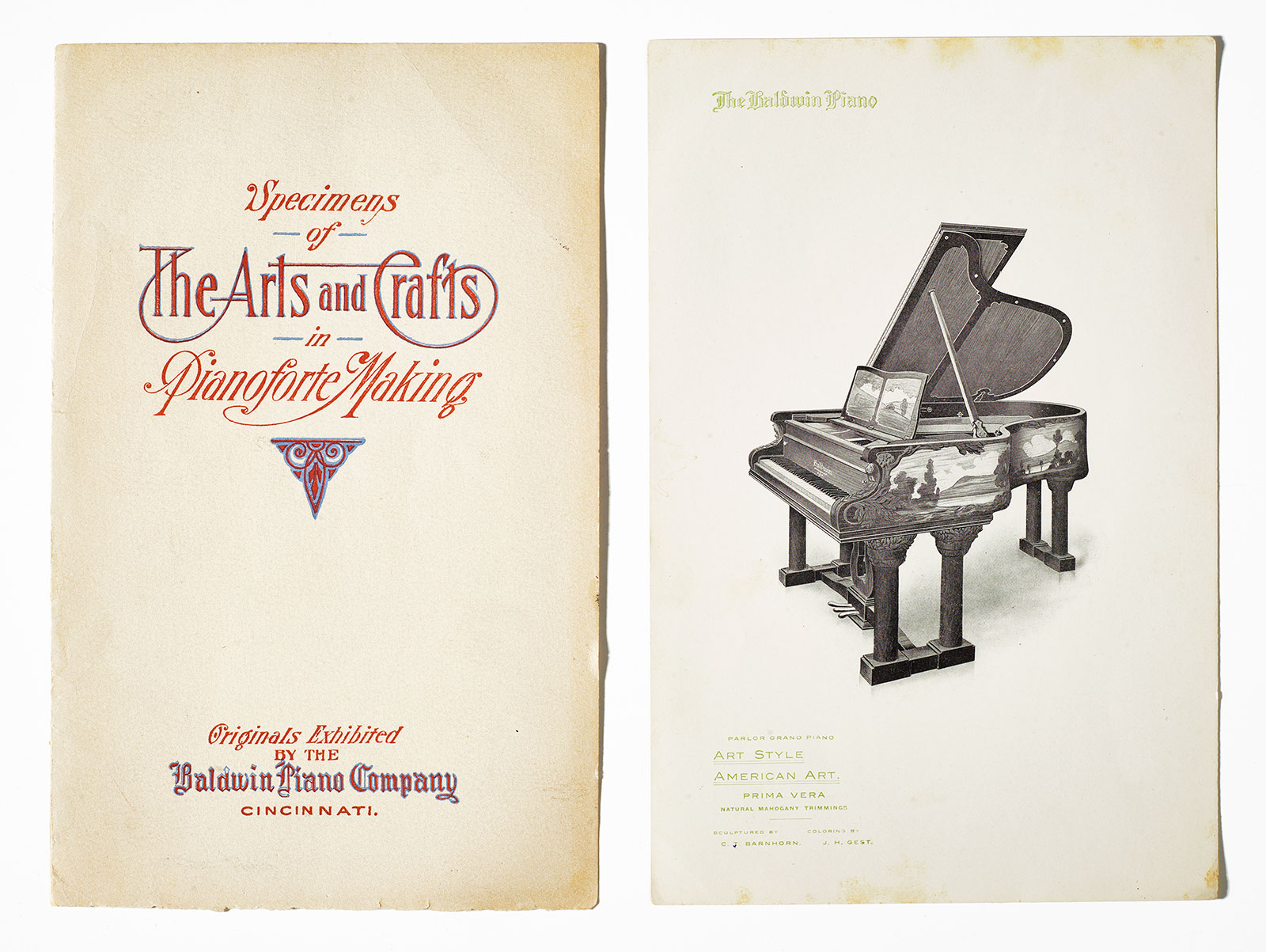
To elevate the brand for its exhibit in the fair's Palace of Liberal Arts, Cincinnati-based Baldwin Piano Company worked with artists to produce a series of what were sometimes called "art pianos" and described as "specimens of the arts and crafts in pianoforte making."[1] For the American Art Piano, Baldwin approached recognized artists Joseph Henry Gest and Clement J. Barnhorn, both associated with the Cincinnati Art Academy, to collaborate on the case design. Cited as an entirely new concept in 1904 and projecting an American Art Nouveau aesthetic[2], this parlor grand piano is the result of a unified effort by the two artists and colleagues. Gest, a painter, was director of the Cincinnati Art Museum as well as the Cincinnati Art Academy, where Barnhorn headed the sculpture department.
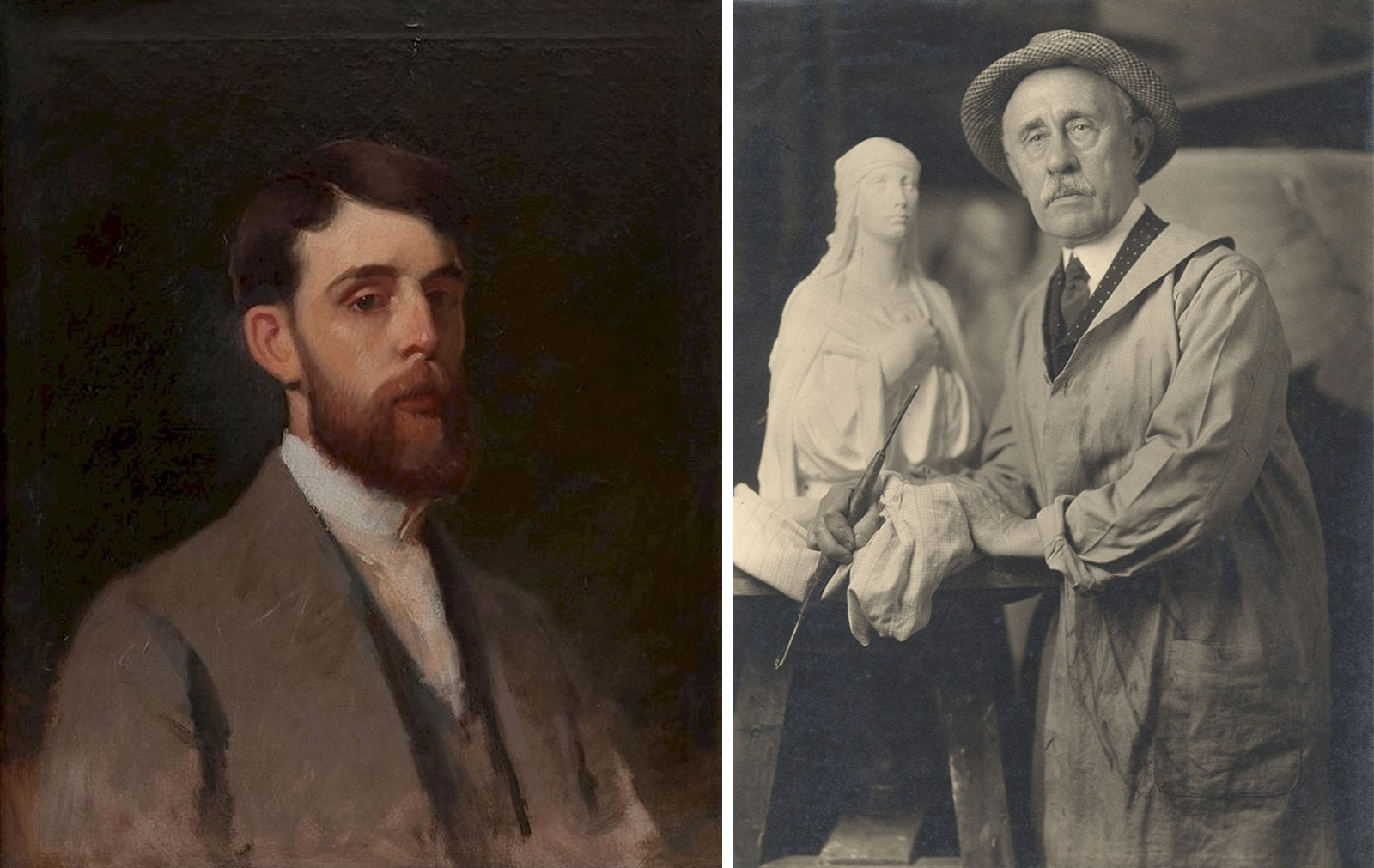
The piano seamlessly combines Gest's pigmented depictions of idyllic pastoral scenes with Barnhorn's relief-carved foliage, flowers, and trees. A river flows through a backdrop of rolling hills and snow-capped mountains with an occasional built structure dotting the shoreline. Even the music desk—the stand over the keyboard to support sheet music—features a large tree central to a bucolic vista. A 1907 Baldwin promotion noted about the material, a natural and white mahogany known as prima vera: "The varying effects of light and shade in the landscape are attained by graining the wood and then tinting it."[3]
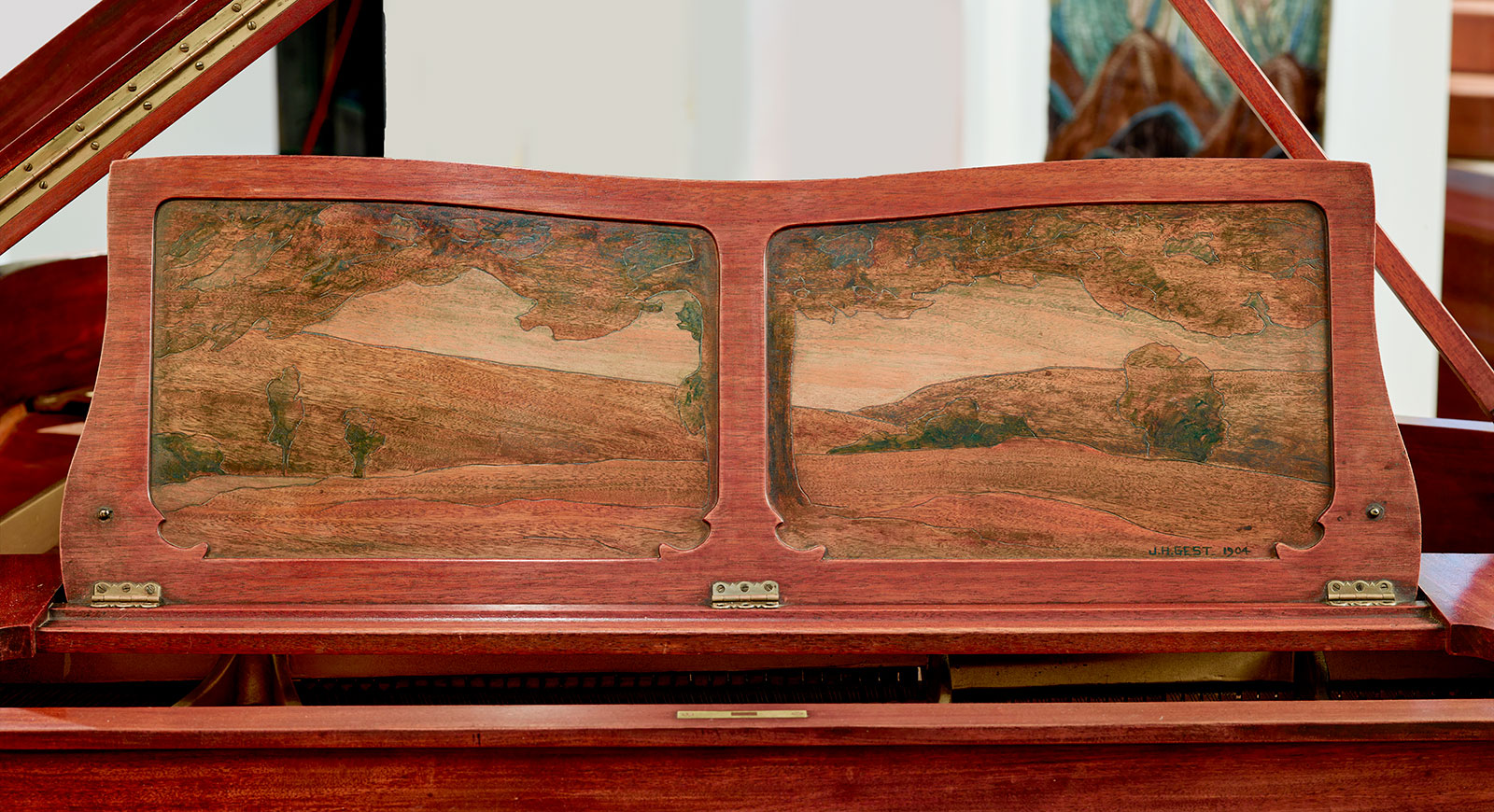
The iconography of the land in the American Art Piano was intentional. The St. Louis World's Fair celebrated the centennial of the Louisiana Purchase, in which the United Stated acquired 828,000 square miles of land from France, nearly doubling its size at the time. While three of the featured pianos were French-themed parlor grands representing historic styles (Louis IV, Louis XV, and Louis XVI), the two "American Ideals" (the American Art Piano and the Colonial upright grand) highlighted landscapes[4] that allude to America's vast territorial expansion.
The American Art Piano didn't sell immediately and may have been retained for its promotional value—Baldwin repeatedly used its image in marketing materials and magazine ads. In 1910, the piano was on display at Baldwin's St. Louis branch, valued at $6,000[5]—about $200,000 in today's currency. It finally sold in 1915 to an unknown individual. In 1986, the family of the original owner sent the piano to auction in California, where it was acquired by Wolfsonian founder Mitchell "Micky" Wolfson, Jr. In 1997, Wolfson donated this masterpiece to Florida International University, assuring that it will be enjoyed, researched, and exhibited into the future.
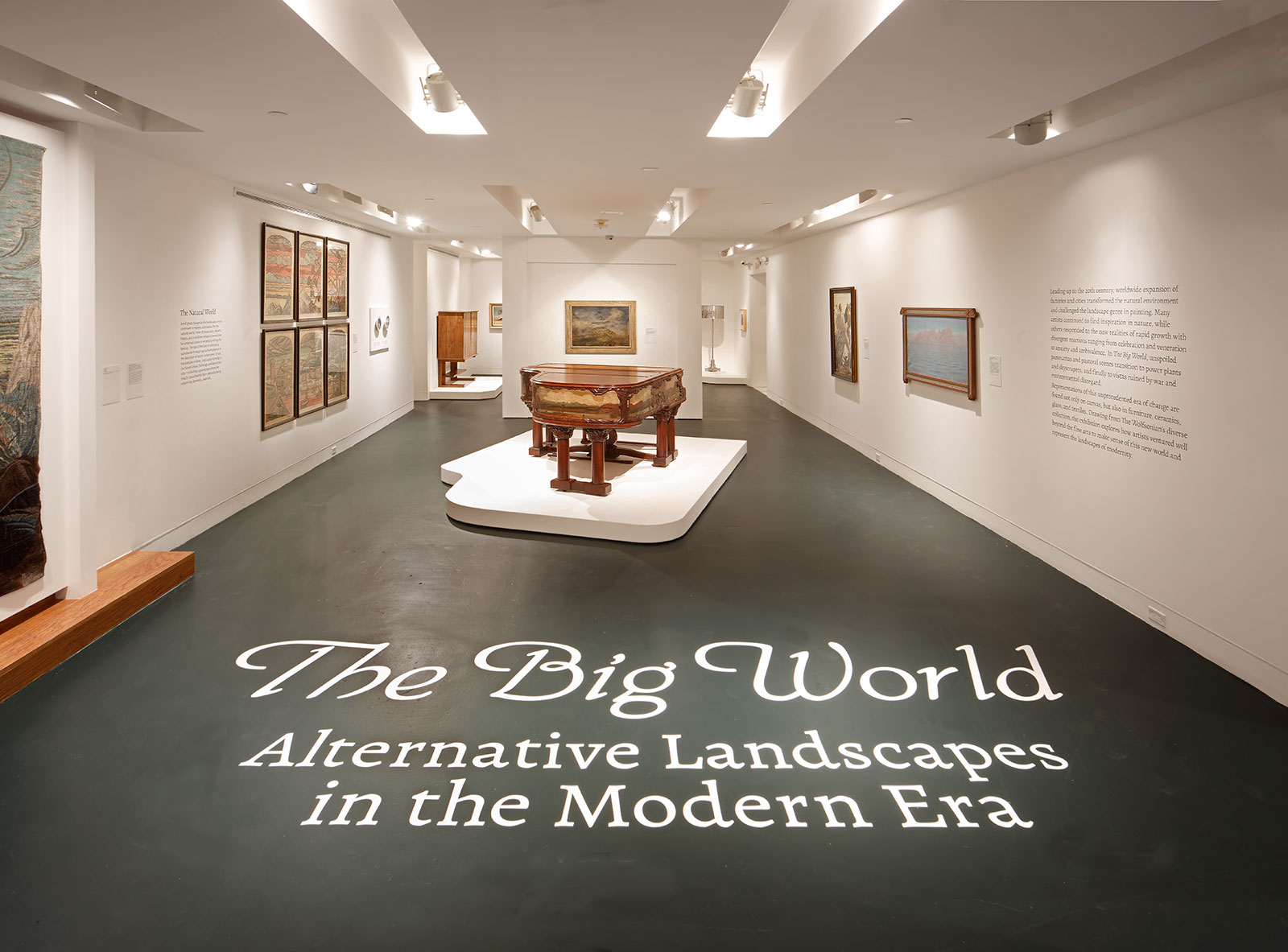
To see this piano and other related objects focusing on depictions of the land from The Wolfsonian's collection, visit The Big World: Alternative Landscapes in the Modern Era, on view from August 30, 2023, through June 2, 2024.
– Lea Nickless, curator
All works from The Wolfsonian–FIU, The Mitchell Wolfson, Jr. Collection, unless otherwise noted.
[1] From the title of a Baldwin Piano Company publication that was likely distributed at the Baldwin exhibition at the 1904 St. Louise Louisiana Purchase Exposition.
[2] "The Baldwin Display," The Parson's Daily Sun, June 4, 1904.
[3] "The Baldwin Piano," The International Studio, 1907, page 284.
[4] "Baldwin Exhibit at World's Fair," The Kingman Journal, May 13, 1904.
[5] "Baldwin Piano Co, Outgrows Old Home, Moves to New One," St. Louis Post Dispatch, October 24, 1910.
